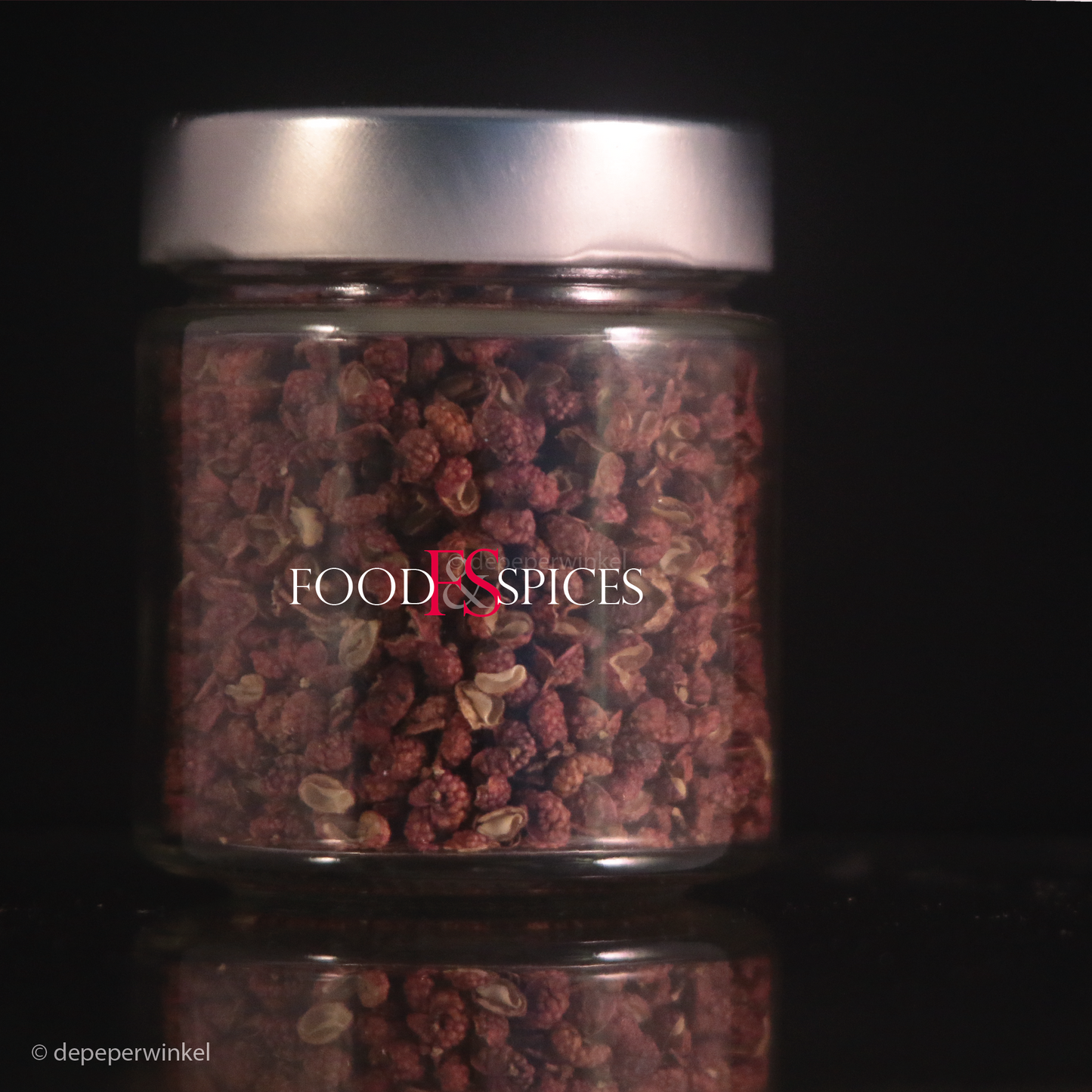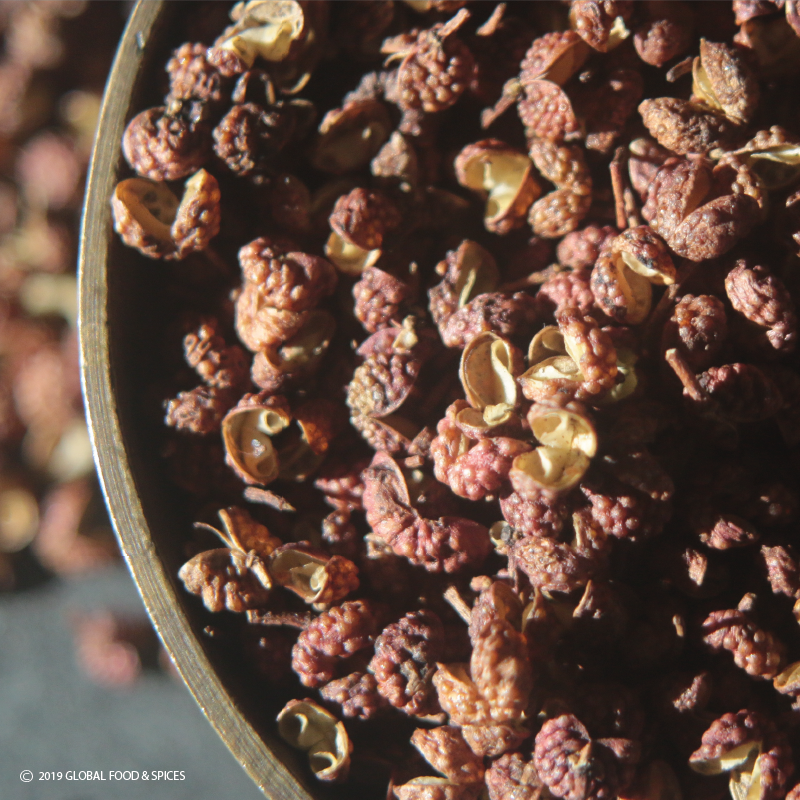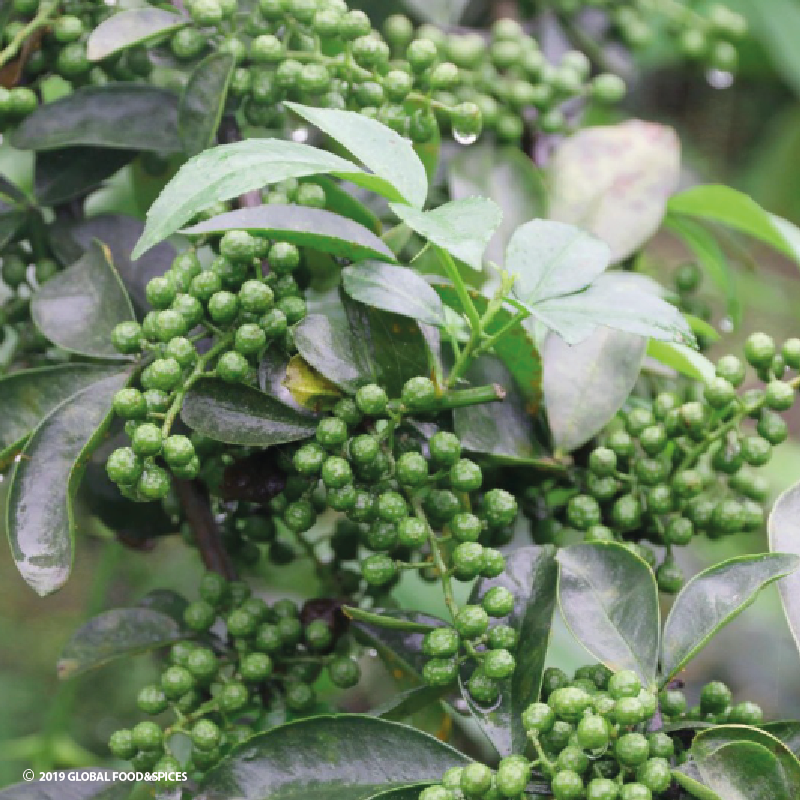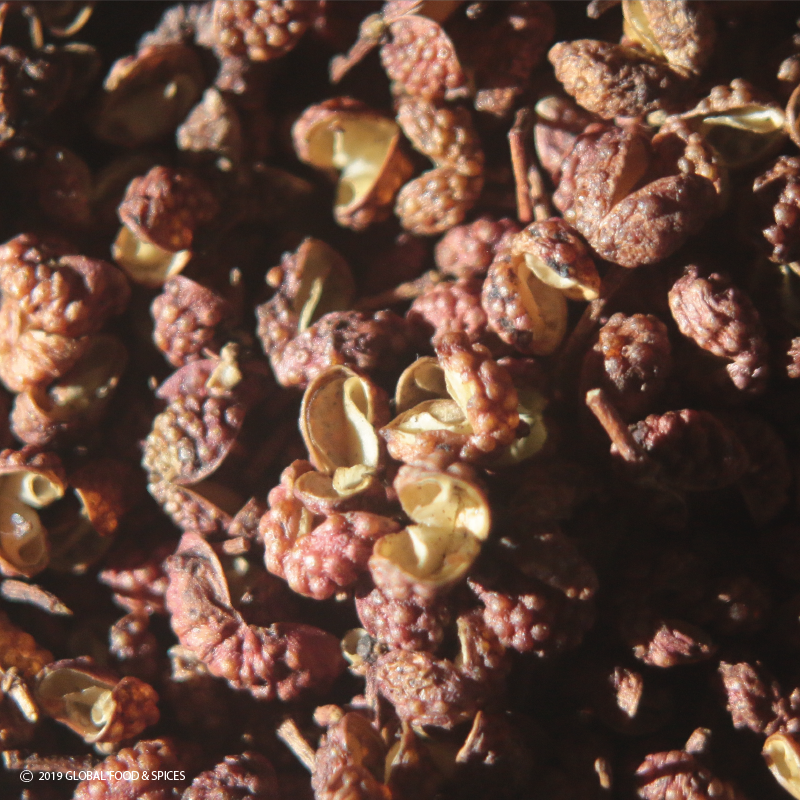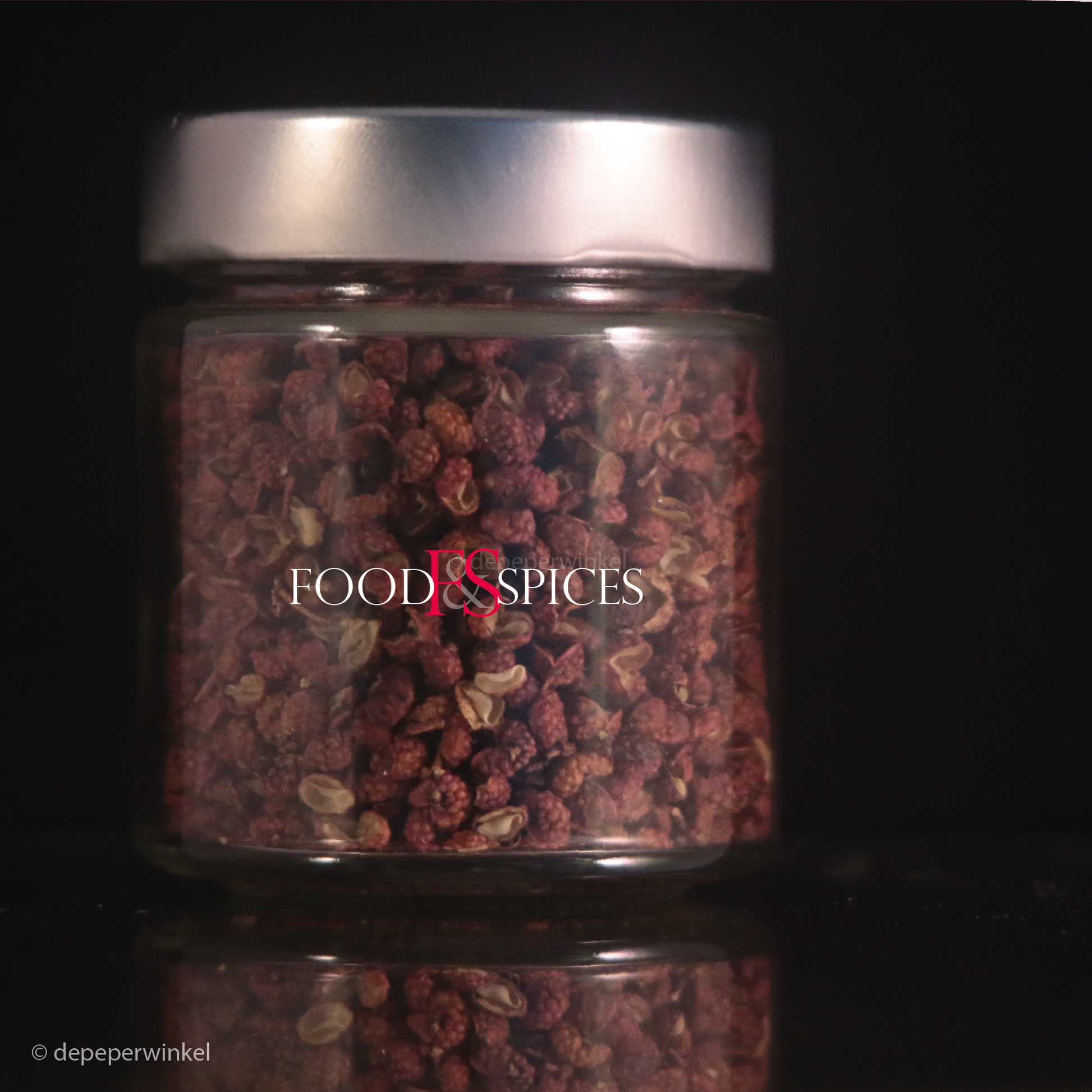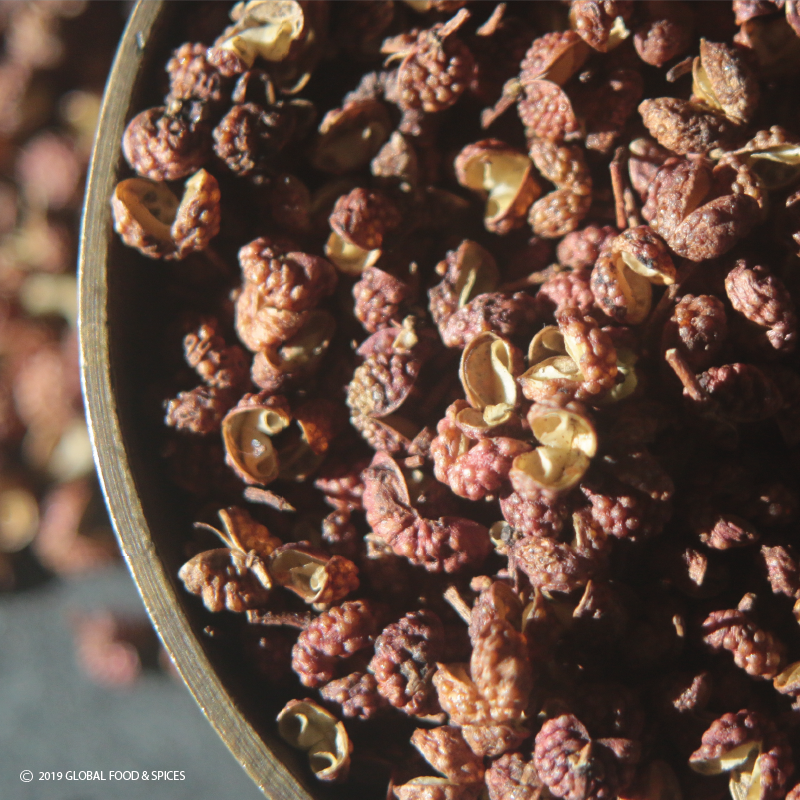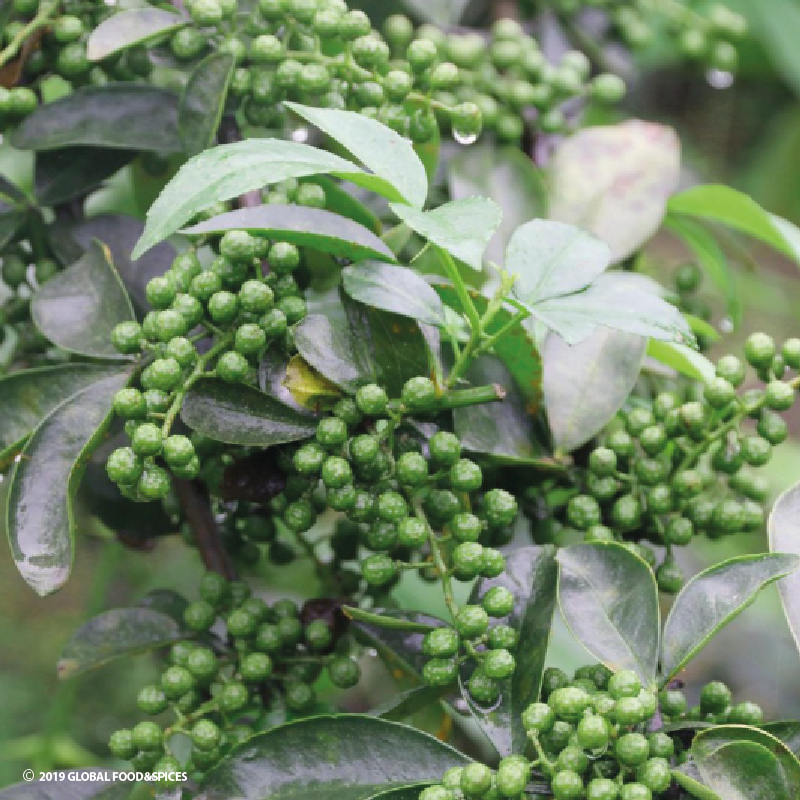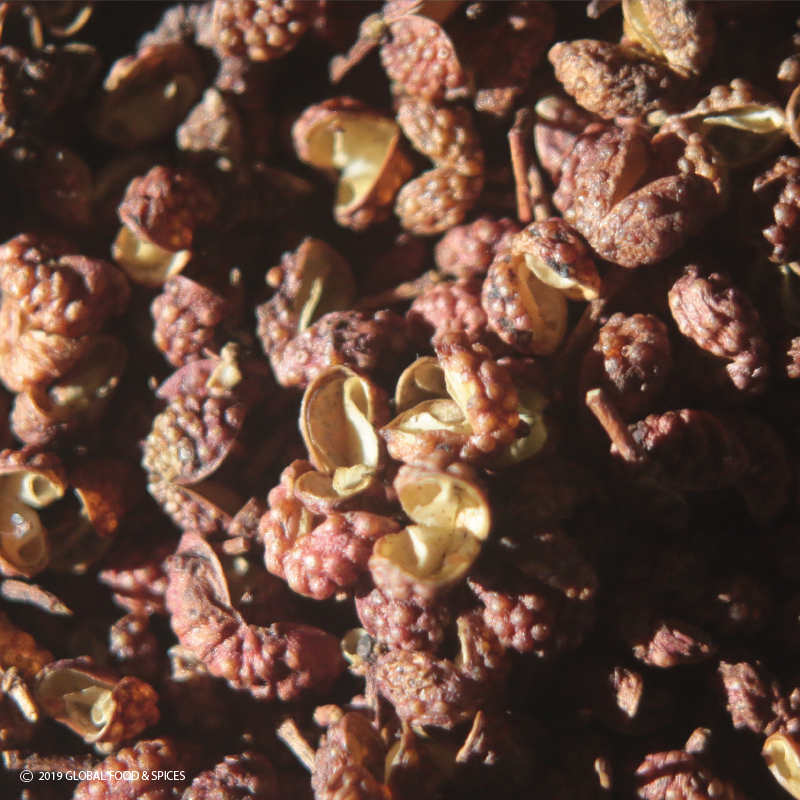depeperwinkel
Red Sichuan pepper Huā jiāo
Red Sichuan pepper Huā jiāo
Unable to load availability for pickup
Our red huā jiāo. in full dà hóng páo huā jiāo, is a special Szechuan pepper. Like other Sichuan peppers, it is characterized by the typical citrus and lavender aroma, but with a clearly present aroma of roses, hence the name 'flower pepper', which has nothing to do with the shape of the fruit.
This Sichuan pepper is the dried, unripe berry of the Zanthoxylum bungeanum, one of the many species of toothpine tree, called prickley ash in English, because of the enormous spines on the trunk and branches. The pepper is called Szechuan pepper after the region where it naturally grows, Szechuan, home to one of the ten classical Chinese cuisines.
The name of this pepper is a combination of Dà hóng páo and huā jiāo, which means flower pepper in Szechuan dialect. Dà hóng páo hua jiāo means tribute pepper, a reference to the legend of Dà hóng páo (meaning long red cloak) that takes place in the karst mountains of Wuyishan in Fujian, where Dà hóng páo tea, an exclusive oolong, is also picked.
The Zanthoxylum is a plant that can grow into a large tree whose bark is covered with coarse, sometimes lignified spines. The bark therefore appears to be covered with a row of 'molars', hence the Dutch name toothache tree. In traditional Chinese medicine, the peppers and the root are used - not surprising given the appearance of the tree - to combat toothache.
The ripe berry is picked early in the autumn, as soon as the berries open and the rather bitter seeds are released. The seed casings are traditionally dried in the sun, but better varieties are not (anymore). The better quality Sichuan pepper - also this one - contains no or hardly any seeds and no or hardly any stems, and is dried under condition.
There is a clear taste difference between the smaller berry of the Zanthoxylum bungeanum and the Zanthoxylum piperitum, which makes the former very popular with Asian chefs. The small and often darker berry is the most sought after on the Chinese consumer market, but also in other Asian countries (and Europe), partly because of its lower price. The 'old guard' in China also clings to the taste of this commonly available Sichuan pepper, with a preference for the unripe, green one.
The unique sharpness experience of sanshol
Characteristic of all Zanthoxylum peppers, and therefore also of this Szechuan pepper, is the tingling you experience on the tip of your tongue due to a substance in the pepper called sanshool, named after the Japanese sanshō. The pungency is caused by the amides in the peel of the fruit: α-, β-, γ- and δ-sanshool, α hidroxy sanshool and β-hidroxy sanshool. γ sanshool and α hidroxy sanshool are mainly responsible for the anesthetic effect. The amount of α-hidroxy-sanshool in the berries can amount to (more than) 50 ‰ of the dry weight, of γ sanshool around 5 ‰.
Szechuan is known as the sharpest Zanthoxylum pepper. The Indonesian andaliman - a fairly rare variety - is conveniently forgotten, because this 'batak pepper' is also quite sharp. By the way, ripened berries are sharper than the unripe ones.
The tingling is accompanied by a slight numbness, jokingly compared to tasting a 9 volt battery. One single berry is enough to experience that! This somatosensation, stimulation by touch, has been used as an anesthetic in traditional medicine in Asia for centuries. The effect is very complex and the subject of extensive studies. Hydroxy-α-sanshol in particular is said to cause the tingling, and there are certain parallels with the pungency sensation of capsaicin, the pungent substance in chili peppers, but also with menthol and mustard oil.
Smell and taste
The Szechuan berry contains
- linalyl acetate, responsible for a pleasant citrus, bergamot and lavender scent,
- limonene, the smell of lemon peel,
- geraniol, rose scent,
- geranyl acetate, lavender scent.
- β-pinene, pine resin, and
- linalol, responsible for the scents of rosewood and coriander
A ripe berry contains significantly more linalol, geraniol and geranyl acetate than a green berry.
The aromas develop during ripening, in red Szechuan pepper citrus and lavender predominate.
Combinations
Szechuan pepper combines excellently with citrus (kafir leaf), lemongrass, coconut, coriander leaf, curry leaf, exotic fruit, poultry, crustaceans and shells.
Usage
Szechuan pepper occupies a prominent place in classic and modern Szechuan cuisine. It is used in almost every dish, whole or bruised, roasted and/or ground. In Szechuan cuisine it is very common to roast the Sichuan pepper before grinding it. The roasting is intended to bring out the flavor of the sun-dried berries. Roasting is not really necessary for our pepper.
Szechuan pepper is one of the ingredients of five-spice powder (wǔxiāng fěn).
For those who are not familiar with Sichuan pepper, it is advisable to start with it cautiously and not to eat the pepper raw, unlike the Nepalese timur, for example, which can easily be eaten raw.
Features:
- 100% berries of the Zanthoxylum bungeanum Maxim
- origin: Xinshao, Hunan
Assortment
- available in glass, stand-up pouch and test tube
- glass jar contains 30 grams
- stand-up pouches with a capacity of up to 30 to 300 grams
- available in 10 ml test tube
- larger quantities on request
Gift packaging
- the jar is available in a tasteful gift packaging, consisting of a cube box filled with black tissue paper
- for an overview of our gift packaging, please refer to the gift packaging section
General advice
- Huā jiāo is the Sichuan pepper excellent for use in stir-fry dishes
- use Sichuan pepper sparingly, and choose to use the berries whole or ground
- allow the Szechuan to absorb good moisture, so that the taste and sharpness integrate optimally
Save:
- store your Sichuan pepper in closed packaging
- preferably store in a dark, dry and cool place
- best before September 2025 (09/25)
- this expiration date is an indication
Share
